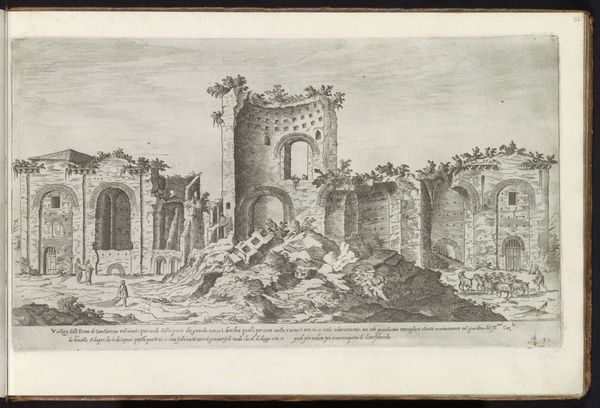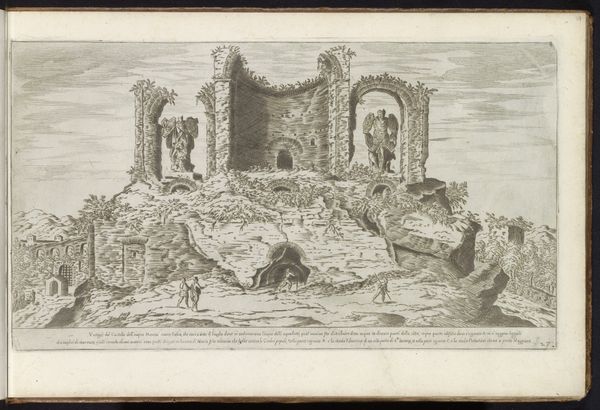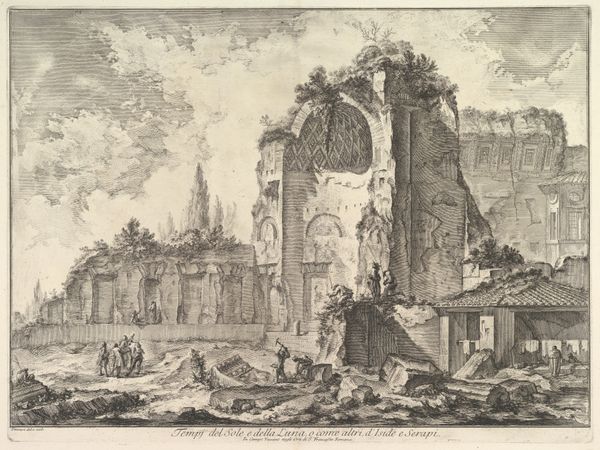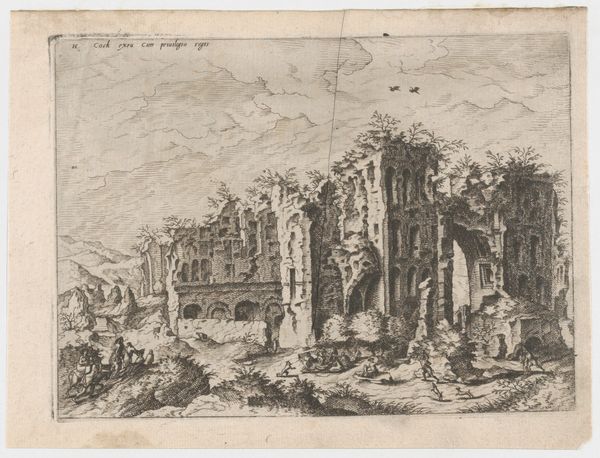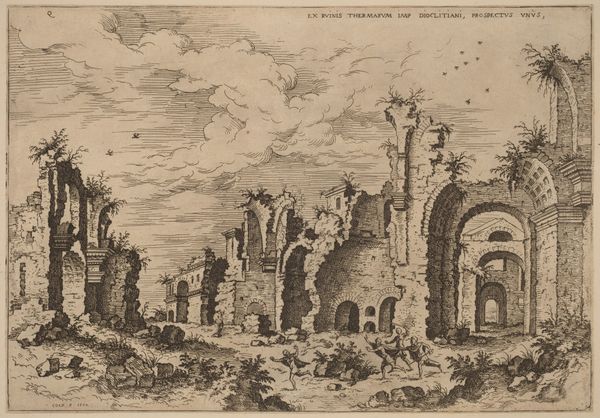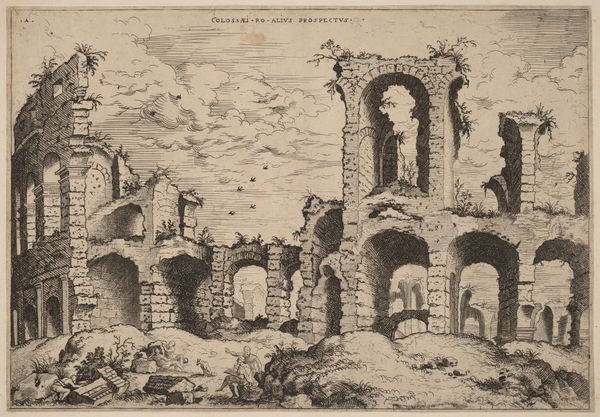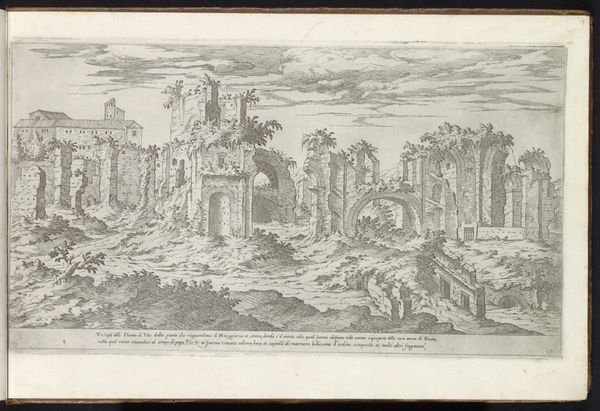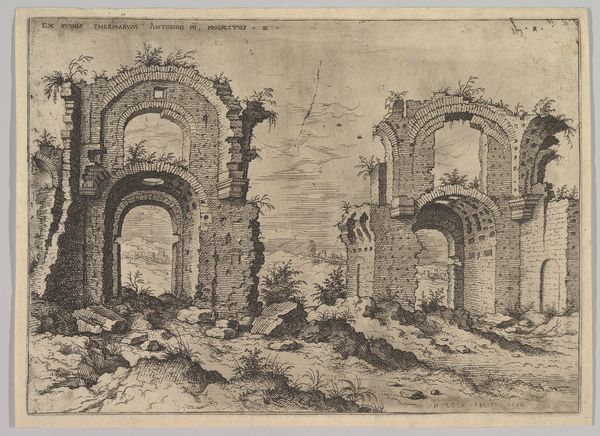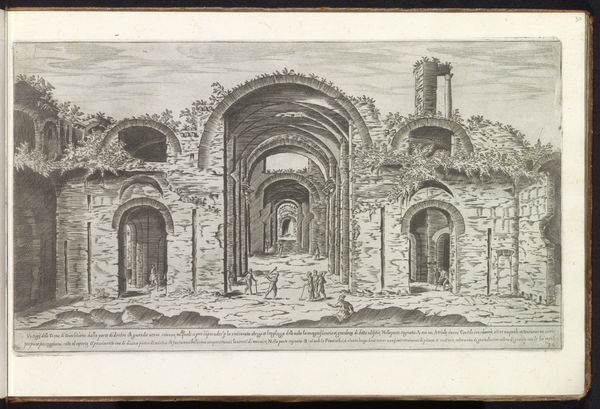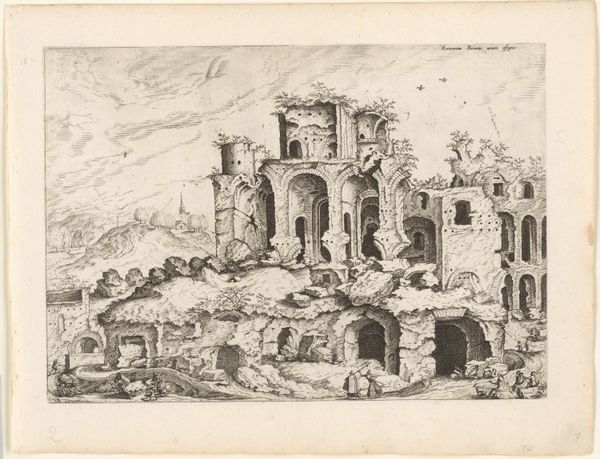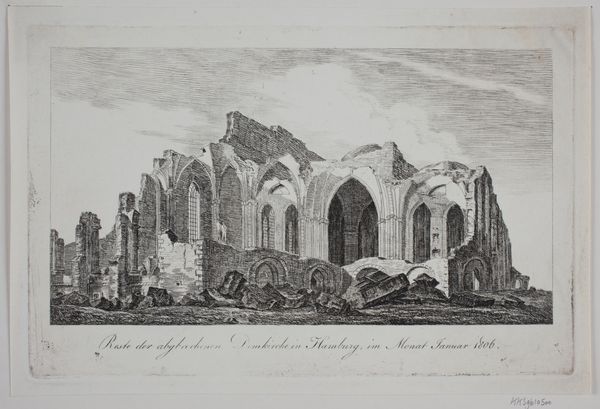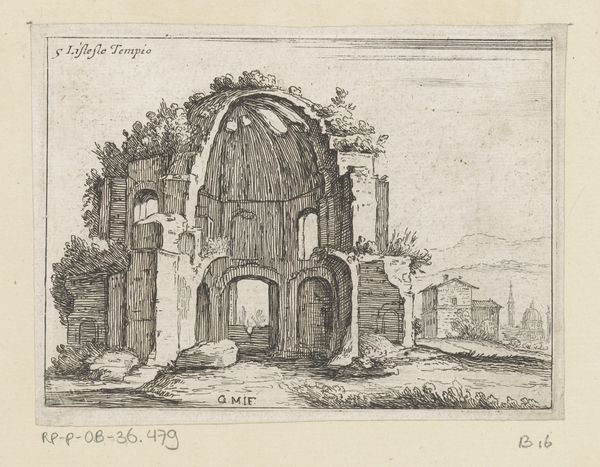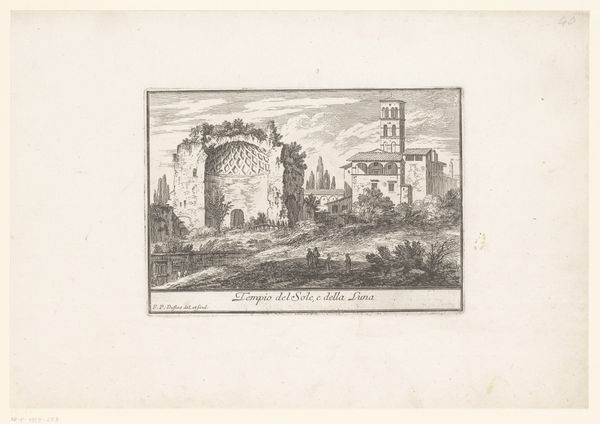
Gezicht op de ruïne van het kartuizerklooster bij Delft 1711 - 1774
0:00
0:00
print, etching, engraving, architecture
#
baroque
# print
#
etching
#
landscape
#
engraving
#
architecture
Dimensions: height 136 mm, width 181 mm
Copyright: Rijks Museum: Open Domain
Jacobus Schijnvoet etched this view of the Carthusian monastery near Delft sometime before 1743. Observe the evocative ruin, a motif pregnant with symbolism. Ruins, emblems of decay and the transience of human endeavor, have long captivated the artistic imagination. Consider the arches, still reaching skyward, yet broken – echoes of triumphal arches, symbols of power now humbled by time. We can trace this potent iconography back to the Roman era, where ruins evoked both nostalgia and a stark reminder of mortality. Even in the Renaissance, artists like Ghirlandaio incorporated ruins into religious scenes, layering classical grandeur with Christian themes of rebirth and redemption. Here, the monastery’s decay speaks to a collective memory of religious upheaval and the shifting sands of power. But do we not also see in these skeletal remains a promise of eventual renewal? Just as the human psyche represses trauma, only for it to resurface in unexpected ways, so too does the image of the ruin persist. A testament to the cyclical nature of history, it embodies both loss and the enduring spirit of human existence.
Comments
No comments
Be the first to comment and join the conversation on the ultimate creative platform.
